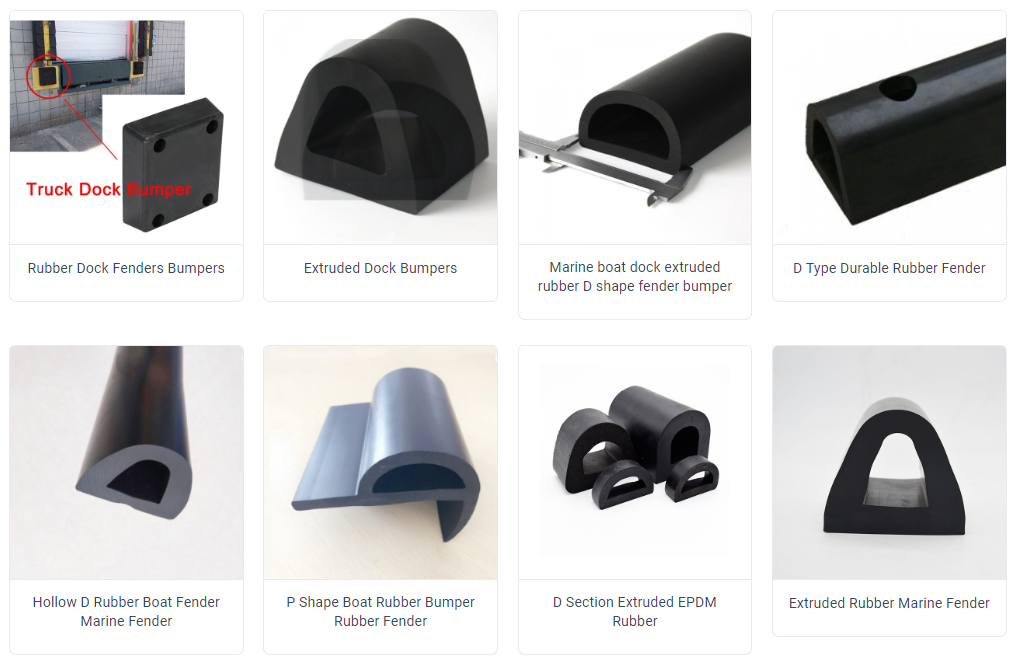A rubber fender is an integral part of marine boats. It plays a pivotal role in protecting and preserving marine boats during docking. Dock fenders act as a buffer that absorbs impact forces. They also prevent potential damage to both the boat and the structures it comes in contact with. The rubber boat fendering effectively cushions the boat against collisions. In addition, it reduces the risk of abrasions, dents, and more severe structural harm.
Properly installing dock fenders is crucial to ensure their effectiveness. This installation process typically involves a series of meticulous steps. Each step contributes to the overall safety and functionality of the boat. Proper installation also enhances the boat’s overall durability. From careful measurement to secured placement, each stage creates a robust fendering system.
This article aims to provide a comprehensive guide on installing marine fenders on boats. We recommend you follow the outlined steps and recommendations. As a result, boat owners, operators, and enthusiasts can effectively enhance their boat’s protection. In addition, understanding the rubber fender installation empowers us to make informed decisions. It constitutes safer and more efficient docking experiences. Above all, this guide saves our investment and promotes marine safety. In addition, it derives maximum benefit from our rubber fendering system.

Pre-Install Preparation
Before jumping on to the installation process, careful preparation is paramount. This stage carefully identifies the suitable types of marine fenders required for our boats. It also sets the foundation for a successful and efficient fendering system. It is important to note that the right product and proper installation protect our boat efficiently.
Firstly, we should evaluate our boat’s existing fender rubber seal. We’ll inspect their condition for wear, tear, or damage. If the boat and dock fenders deteriorate significantly, we will replace them ASAP. It is necessary to ensure optimal protection during docking and mooring maneuvers.
Secondly, we will identify the requirements of our boats. In this case, the size, weight, and docking requirements determine the appropriate types of marine fenders. For example, bigger ships with more significant displacement require more robust rubber dock fenders. Therefore, the specific docking environments the boat frequently encounters influence the rubber fender selection.
Thirdly, we will identify the optimal placement of the marine fenders. The chosen location should align with the boat’s dimensions and docking conditions. Finally, we will prepare the boat’s surface to ensure a secure and reliable attachment. In this case, we should clean the areas where the dock fenders will be installed. A clean surface improves adhesion and promotes a solid bond between the rubber fenders and the boat’s hull.
Tools And Materials Required For Installing The Boat Rubber Fender
An effective rubber fender installation relies on specific tools and materials. They facilitate precise and secure attachment. Since we already did our pre-install preparation, ensure the following tools and materials are ready.
- A measuring tape is necessary to determine the placement of the fenders accurately. It guarantees that the dock fenders are positioned at the optimal height.
- Drill and drill bits: A power drill can help you create holes in your boat’s hull for fender attachment. In this case, selecting the appropriate drill bit size is crucial to prevent material damage.
- A brush with stiff bristles cleans the drilled holes of any debris or residue. It ensures a clean surface for adhesive applications. It also promotes a strong bond between the rubber fender and the boat.
- Acetone is a solvent that cleans the drilled holes. It eliminates any contaminants that could hinder the adhesion process. It prepares the surface for optimal glue or adhesive bonding.
- Screws and screwdrivers: These two components secure the rubber fenders in place.
- The specific adhesive or glue depends on the types of marine fenders. A suitable adhesive or glue enhances stability and longevity.
Each of these tools serves a specific purpose in the installation process. Collectively, they contribute to the creation of a robust fendering system. They execute each step precisely and confidently, from accurate measurement to secure attachment.
Removal of Damaged Rubber Fender
This step is crucial when installing new boat rubber fenders. Perfectly removing damaged rubber fenders ensures a clean slate for the installation process. It also prevents potential damage to your boat’s surface. So, before installing the new rubber fender, take the time to remove the old or damaged one.
Firstly, we should carefully loosen the fasteners that attach the old rubber fender to our boat. This step prevents unnecessary strain on the boat’s structure. It also ensures a smooth removal. Secondly, we will check for adhesives. In this case, we can inspect if the old fender is held in place with adhesives. If yes, we can use a heat gun or hairdryer to gently soften the glue and make it easier to peel away. And then, we can start removing the old fender by gently peeling it away from one end. In this case, we can tap along the edges with a plastic or rubber mallet. It facilitates a controlled and damaged-free detachment.
After removing the old rubber fender, we cleaned the area meticulously. We can employ a gentle remover to eliminate any lingering adhesive residue. While the area is exposed, we should check the underlying boat surface for any damage caused by the previous fender. Finally, we are ready to install the new fender rubber seal on our boat.
Boat Rubber Fender Installation Process
Once again, it is essential to note that adequately installing a rubber fender on your boat is crucial. It protects your boat during docking and mooring. The following step-by-step guide outlines the precise process of the installation. By diligently adhering to these steps, fender installation ensures optimal boat protection. We can guarantee stability during docking and mooring.
Measurement And Positioning
Before beginning the installation, we accurately measured our boat’s dimensions. We will check its length, height, and beam. These measurements determine the fenders’ proper placement along the boat’s hull.
We calculate the ideal height of the marine dock fenders from the waterline. Usually, these fenders should be positioned at a level that aligns with potential contact points during docking. As a result, it ensures that impact forces are absorbed effectively. Besides, the boat remains shielded from potential damage.
Drilling Hole
Using the appropriate drill bit size, we carefully make holes in the boat’s hull at predetermined fender placement points. In this case, the drill bit size should match the diameter of the screws or bolts. The right size will effectively secure the rubber fenders. We recommend employing steady pressure and controlled movements when drilling. As a result, it helps you to avoid splintering or damaging the material.
Cleaning Hole With Brush And Acetone
After drilling the holes, it’s crucial to maintain a clean and debris-free surface for optimal fender attachment. We use a sturdy brush to remove lingering wood shavings or residue from the drilled holes. Cleaning with a brush removes the external dust or debris left in the drilled hole.
However, there might be some obstacles that may hamper the adhesive performance. In this case, we use acetone for the further cleaning process. Acetone is a solvent that cleans the drilled holes. It eliminates any contaminants that could hinder the adhesion process. It prepares the surface for optimal glue or adhesive bonding.
This meticulous cleaning process ensures a pristine bonding surface. It allows the rubber fender to adhere securely to the boat’s structure.
Place The Rubber Fender Securely
Precise placement of the rubber fender is essential to its effectiveness and safety of the boat. We begin by aligning the fender’s attachment holes with the pre-drilled holes on the boat structure. The alignment ensures a proper fit and optimal distribution of impact forces.
Now, we hold the fender against the hull at the calculated height from the waterline. At this moment, we ensure that the fender is positioned symmetrically and maintains an even gap between the edges and the hull. We can use screws and adhesive to secure the rubber fender.
Glue Adjustment And Apply
We choose suitable adhesives or glue depending on the types of marine fenders. It ensures a solid and durable bond. Now, we apply the adhesive to the areas where the fender comes into contact with the boat’s hull. We should follow the manufacturer’s instructions for proper applications in this case.
Finally, we allow the adhesive to cure for the recommended time before proceeding to the next step. Taking time ensures a solid adhesive bond. It also provides the bond can withstand the forces experienced during docking and mooring.
Insert The Screw
Here, we come to the last step necessary to finalize the rubber fender’s secure attachment. We insert the screws through the fender’s holes and into the pre-drilled holes on the boat’s hull. We can now use the appropriate tools to tighten the screws gradually. During this process, we should check the fender’s alignment and positioning.
Summary
We have covered all the steps for effective rubber fender placement in installation. All actions are crucial, starting from pre-installation preparation to inserting the screw. Each step ensures the effectiveness of your boat dock fenders. The most critical step you should follow is choosing the best dock fenders for your project. Choosing the Seashore Rubber brands is the best solution.

Seashore Rubber is one of the world’s most popular rubber fender manufacturers. They keep the best boat dock fenders suitable for marine vehicles. Their boat and dock fenders come with high-quality finishing. The structural material can withstand high pressure and impact forces. Therefore, we highly recommend this brand for all types of marine vehicles. You can also consult their customer service team to learn more about their products.
